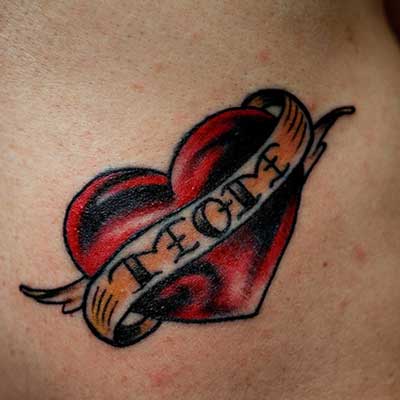
Getting a Tattoo? Check the water…
Just this week a patient asked what they should look for in a tattoo parlor. 20% of adults have a tattoo, so I’m surprised this hasn’t come up a lot more.
First off–I think many dermatologists hate tattoos, but I don’t. Apparently many of my fellow dermatologists think its some kind of sacrilege to ink the body, but I find tattoos interesting. Sometimes they came from a stereotypical trip to Vegas, but oftentimes there is a personal story behind them.
Tattoos and Infections
When thinking about tattoo safety, my first thought is about bloodborne pathogens–HIV and hepatitis. When I think of a needle stick injury I think of HIV first, but its actually not the most likely thing you could get. Hepatitis B is. The risk of contracting Hepatitis B from a needle contaminated with Hepatitis B is about 25%. For hepatitis C, the risk is about 0.5-2%, and for HIV its only about 0.3%. Just as in dermatologic surgery, and anything else where needles are used, its important to take measures to ensure that there is no risk of transmitting these diseases.
Tattoo Shop Regulations
In WA state, tattoo shops are regulated by the state, and you can find information on this at:
http://www.dol.wa.gov/business/tattoo/sanitation.html
Frankly, many of these regulations are similar to what we use for skin surgery, and if followed, there really ought to be no greater risk of contracting one of these diseases than from any other medical procedure.
Other Infections
If the regulations are adhered to, blood borne infection should not be an issue. However, there is another problem related to tattoos that we sometimes see in Dermatology–bacterial infections. The most common bacterial infections are going to be infections with normal skin flora while the tattoo is healing.
But, there have been several reports about other infections. The CDC has become interested in mycobacteria chelonae infections after tattooing. Mycobacteria are a primitive sort of bacteria that cause unusual diseases. They tend to be slow growing and can be hard to kill. Tuberculosis is one example. Other types of mycobacteria are capable of causing unusual skin infections, including some that have been traced back to tattoo shops.
Mycobacteria Chelonae Infection and Tattoos
These infections have been traced to gray tattoo ink that was made by diluting normal black ink with tap water. However, the CDC has now received reports of these organisms being found in unopened bottles of ink, indicating that they were contaminated at the time of manufacture. Here is the kicker-since tattoo ink is considered a cosmetic product and not a drug, the FDA cannot legally regulate. What they can do is try to spread the message, which I am happy to help with.
Signs of Tattoo Infection
If you get a tattoo you should seek medical attention if you start to develop red bumps or even a diffuse red rash surrounding the tattoo.
What to look for in a Tattoo Shop
In addition to the normal sanitary practices we’ve talked about, you should ask your tattoo artist if the inks that they use have undergone a process that can eliminate bacterial pathogens.


